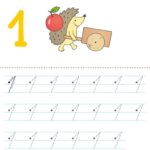Learning is not just about understanding what is read and heard but also about retaining new knowledge. It’s challenging to learn if one can only comprehend without a good memory to store information.
Parents often aspire for their children to excel academically and easily retain new knowledge. So, what can parents do? Fortunately, there are two daily practices to improve children’s memory retention.


Engage in daily conversations on various topics
Working memory is the ability to temporarily store, process, and retrieve information to complete a task. It is essential for conversations, calculations, reading, and learning.
For instance, a math teacher writes on the board and says, “Add 15 and 27, then subtract 8.”
Students need to remember the key points the teacher mentioned while simultaneously performing calculations and thinking ahead, keeping the number 42 in mind for the subsequent subtraction: “42-8.”
If a child has a poor working memory, they may quickly forget what they’ve heard and struggle to keep up with the teacher’s pace.
Adults, too, face challenges in daily life, such as difficulty focusing, problems with reading and writing, frequently misplacing items, and struggling to cope with unexpected situations.
So, how can parents engage in conversations that effectively enhance working memory?

A weak working memory can lead to quickly forgetting what one has heard.
Embed multi-step information in conversations
This approach helps children easily understand and perform tasks, enhancing their listening and logical thinking skills. By presenting steps clearly and systematically, children can better follow and execute tasks.
For example: “Please get an apple from the fridge, wash it, cut it into three pieces, put them on the green plate, and bring it to the table.”
Repeating and emphasizing each step aids in longer-term retention. Upon task completion, offer praise to encourage and motivate your child for future endeavors.
Recap and ask detailed questions
Parent: “Do you remember what we saw at the park last Saturday? What did we see first? And what happened next?”
Child: “First, I saw a rainbow… then a puppy ran up…”
Parent: “Correct! How many colors were in the rainbow? What color was the puppy?”
Note that a child’s working memory capacity is their age + 1 (for adults, it’s 7 ± 2), so start with two information units and gradually increase to 4-5.

Repetition and emphasis on each step enhance long-term memory.

Encourage children to read aloud
Research indicates that for knowledge acquired solely through auditory means, 60% may be recalled after 3 hours and only 15% after 3 days.
For knowledge gained purely through visual means, the recall rate is 70% after 3 hours and 40% after 3 days. However, when visual and auditory means are combined, the recall rate can reach 90% after 3 hours and 75% after 3 days.
Reading aloud engages the eyes, mouth, and ears simultaneously. Stimulating these three senses together can naturally deepen neural stimulation in the brain and enhance memory.
Brain cells respond strongly to emotionally charged information, and the hippocampus can “process” this information. When children read aloud, re-read, and read with emotion, the hippocampus creates the illusion that this activity is essential for daily life and survival.
Consequently, this information is retained and has a higher chance of being transferred to long-term memory.
More importantly, repeated reading aloud can lead to deeper and broader neural connections, not only activating memory circuits but also contributing to the formation of a “reading brain.”

Reading aloud engages the eyes, mouth, and ears simultaneously.
Children who read aloud from a young age can quickly grasp key concepts and find learning more accessible. Therefore, reading should start early in life.
Young children enjoy hearing the same story repeatedly. This is because their brains are not yet fully developed, and they cannot remember all the words and sentences. However, they want to know the entire story, so they listen to it repeatedly. In doing so, their brains gradually remember, understand, and grasp the narrative.
In summary, don’t be afraid to repeat readings; just follow your child’s pace until they understand. Once they learn to read and write, guide them to read aloud independently, tailoring your approach to their unique needs.
Daily conversations and reading aloud may seem simple, but they require patience and persistence. However, if parents remain dedicated, they will eventually witness their child’s remarkable memory retention.







































